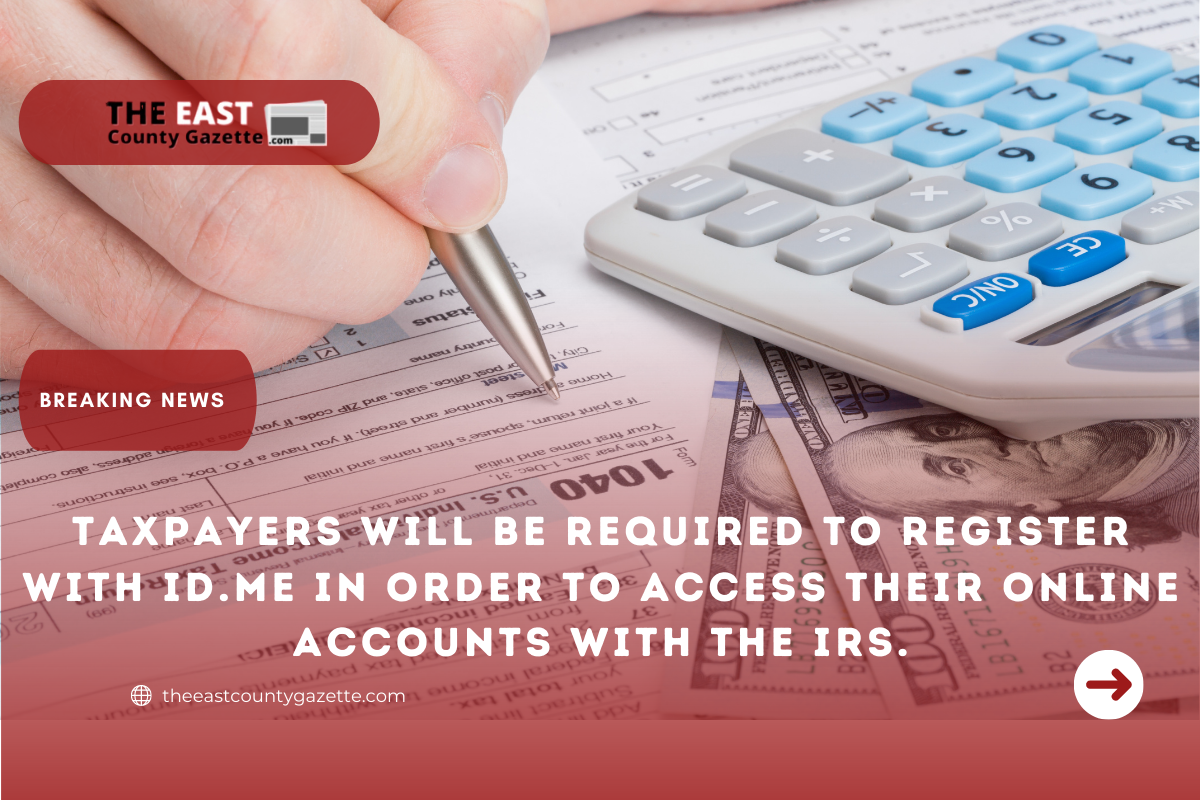Beginning this summer, taxpayers wishing to access their online accounts on IRS.gov will be forced to take a selfie and authenticate their identity with ID.me before gaining access to their accounts.
Existing online accounts with IRS.gov, which can be accessed using simply an email address and a password, will no longer be functional by the middle of 2022, according to the agency.

However, privacy advocates argue that the move is intrusive and that the corporation behind ID.me has a poor track record when it comes to authenticating people’s identities. The IRS believes the move is necessary to safeguard taxpayers from potential identity theft.
The action “will only lead to additional catastrophe for Americans when their data is inevitably breached,” according to Jackie Singh, director of technology and operations at the Surveillance Technology Oversight Project, who expressed her displeasure with the decision on Twitter.
Read More: First-year Effects of Joe Biden’s Presidency on the Prospect of Early Retirement
Hundreds of thousands of users
Estimates from STOP indicate that the IRS online services that will soon demand verification were used 60 million times in the previous fiscal year.
In response to a question about how many accounts had been created on the IRS’s website, a spokeswoman for the agency did not respond. American taxpayers would not be required to snap a selfie or create an ID.me account in order to file their tax returns, according to the spokeswoman, who described the notion as “wildly false.”
“The Internal Revenue Service underlines that taxpayers are not required to submit a selfie or other information to a third-party identity verification organization in order to pay or file their taxes.
Without the use of face recognition technology or the creation of an account, tax payments can be made directly from a bank account, using a credit card, or through other means “In a statement, the spokesman explained.
Taxpayers will, however, be required to register with the new security system in order to view records of prior payments, view transcripts from previous years, or access their Child Tax Credit portal.
Obtaining a transcript from the Internal Revenue Service (which reveals all revenue that employers, banks, and internet platforms have reported to the agency) before filing a tax return is something that CPAs frequently recommend to their clients.
It will convert additional IRS products to use ID.me authentication “over the course of the next year,” according to the agency.
There is a lengthy verification process.
During the pandemic, ID.me, a 12-year-old startup that began as a method for military veterans to get discounts, has experienced tremendous growth, and it has now been designated as the government’s default ID-verification system.
Among other things, the company has raised more than $200 million in venture capital and gained contracts with 27 states as part of its efforts to combat fraud in the unemployment system, for example. The company is valued at $1.5 billion, according to Bloomberg.
Federal and state agencies have already begun to make considerable use of facial recognition technology. According to a report released last year by the Government Accountability Office, 20 agencies deployed internal facial-recognition systems, the majority of which were used to detect illegal activities.
A further conclusion reached by the GAO was that most departments did not keep track of their use of non-government systems and did not take into account the “privacy and accuracy” problems associated with this technology.
Security researcher Brian Krebs was the first to notice the change on the IRS’s website, and he went into great detail about the time-consuming process of validating his identity with the ID.me service.
Users must submit an email address as well as a landline or mobile phone number when signing up for an account. They must also upload identification documents and take a selfie with a camera, which will be used to scan the user’s face to authenticate their identity.
If the ID.me application detects any problems with a taxpayer’s documentation, the taxpayer will be asked to take part in a video chat or phone conversation with an ID.me professional.
For those who do not pass the automated sign-up process, Krebs advises that they should plan on spending several hours becoming verified.
It is also essential that the user consents to the usage of their biometric data, which according to ID.me can include handprints, face scans, facial geometry, and retina scans, among other things.
After starting the process of validating his identification with ID.me, a Gizmodo reporter stated he was forced to halt when ID.me demanded access to his credit record.
It’s a game of verification.
Historically, the Internal Revenue Service has failed to protect taxpayer data, even shutting down its online transcript service in 2015 when it was discovered that fraudsters were exploiting it to steal taxpayer identities.
“The IRS is concerned about data privacy and theft on a large scale. It is unthinkable for them to face a hack “Daniel Morris, a certified public accountant based in California, agreed.
According to Morris, “the service is attempting to modernize, and they want to make sure from a data protection aspect… they want to make sure that someone who is obtaining your data is permitted.”
Read More: Stimulus Checks of $1,400 Are Sent Across the U.S. to Eligible Americans
ID.me, on the other hand, is not without its flaws. There have been numerous complaints from dissatisfied jobless applicants who claim they have been unable to get through the verification procedure. A California lawmaker has accused the system of leaving “thousands of legitimate applications in limbo,” according to Bloomberg.

